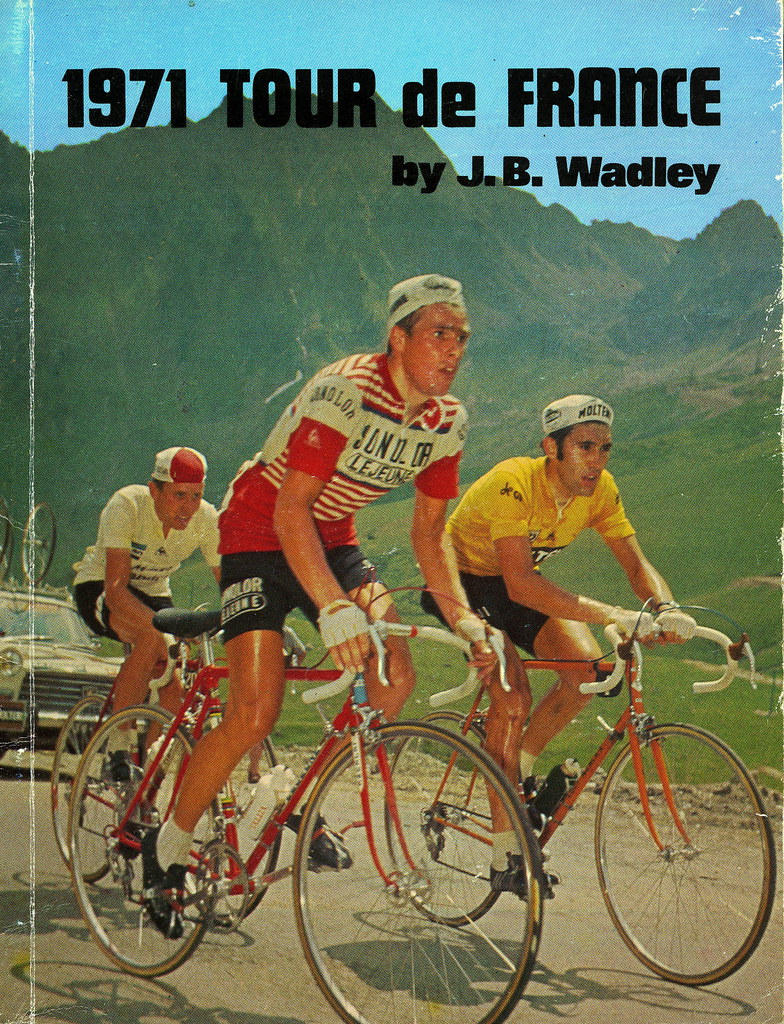White Jersey Tour De France Average ratng: 3,9/5 311 votes
Numerous cycling stage races award a white jersey to signify the current leader and overall winner of a certain competition, or to signify the best young rider in the race. The most prominent of these is the Tour de France, where the jersey is known as the maillot blanc and is awarded to the best-placed rider age under 26. The use of the white jersey to recognize the best young rider in a race is its most common use, though some tours award a white jersey for a different classification.
Generally it's the leader in the the Young Riders Classification which is for riders 26 years or younger on 1st January of the year of the race. However, it is often worn during the race by another rider because the rules of the race stipulate tha. Welcome to the « Online Official Tour de France boutique ». Tour de France is one of the most prestigious cycling Grand Tours and the online store is your exclusive destination for Tour official products and merchandise: winner jerseys, replica jerseys, Le Coq Sportif collections, Oakley sunglasses, souvenirs, Tour Fashion collection and much more. White Jersey achievement in Le Tour de France 2013 - 100th Edition. Win the white jersey having raced, at least, the 7 default stages of your team (Solo/Co-op) 0.
Other stage races, besides the Tour de France, that also award a white jersey for the best young rider include:

- Giro d'Italia (known as the maglia bianca, and the cut-off is 25 years instead of 26)
- Tour of California (where the cut-off is age 23 instead of 26)
White Jersey Tour De France 2021
Tour de France[edit]
Giro d'Italia[edit]
Other white jerseys[edit]
Some stage races award a white jersey for a different classification than youth. The foremost of these is probably the Vuelta a España, where it recognizes the leader in the Combination classification. In this classification, ranks in the General, Points, and Mountains classifications are added, and whoever has the lowest cumulative total is awarded the white jersey. It is a relatively new award, having existed only since the 2003 edition of the race.[1] In 1941, the Vuelta a España white jersey was for the leader and overall winner of the General classification.[2]
The Tour of the Basque Country awards a white jersey to the leader and overall winner of the Points classification.[3] The Volta a Catalunya awards a white jersey with green stripes to the leader and overall winner of the General classification.[4] The 2008 Tour de Suisse awarded a white jersey to a somewhat unusual competition, the Sprints classification,[5] which awards placings not on stage finishes but strictly in intermediate sprints.
White Jersey Contenders Tour De France
The Tour Down Under awards a white jersey, with green piping and side panels, to the leader and ultimately the winner of the King of the Mountains classification.[6]
References[edit]
- ^http://www.cyclingpost.com/protour/races/vueltah.shtml
- ^http://www.cyclingrevealed.com/timeline/Race%20Snippets/VaE/VaE1941.htm
- ^http://autobus.cyclingnews.com/photos/2009/apr09/paisvasco09/index.php?id=/photos/2009/apr09/paisvasco09/paisvasco094/luisleonpodium
- ^http://www.bike-zone.com/photos/2006/may06/catalunya06/?id=catalunya067/Par765387
- ^http://www.bike-zone.com/photos/2008/jun08/suisse08/index.php?id=/photos/2008/jun08/suisse08/suisse088/TDS08St8098
- ^'Jersey Description'. Tour Down Under. Retrieved 2009-07-28.
Retrieved from 'https://en.wikipedia.org/w/index.php?title=White_jersey&oldid=768799917'
THE WHITE JERSEY
Although the white jersey first appeared in 1968 to reward the leader of the combined classification, which was based on the overall, points and mountains standings, it wasn’t until 1975 that it began to symbolise the future and youth of the Tour de France peloton. A leader in waiting, the wearer of the white jersey, which is sponsored by Krys, is the best placed in the overall standings who is under the age of 26. The Italian Francesco Moser was the first winner of young rider classification and illustrated perfectly its philosophy since he went on to become world champion and the victor of the 1984 Giro, and claimed 10 Classics, including three victories in Paris-Roubaix. Only Laurent Fignon (1983), Jan Ulrich (1997), Alberto Contador (2007), Andy Schleck (2010), Egan Bernal (2019) and Tadej Pogacar (2020) combined the yellow and white jerseys at the final.